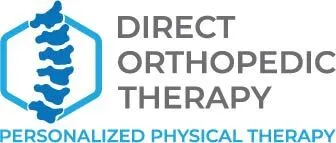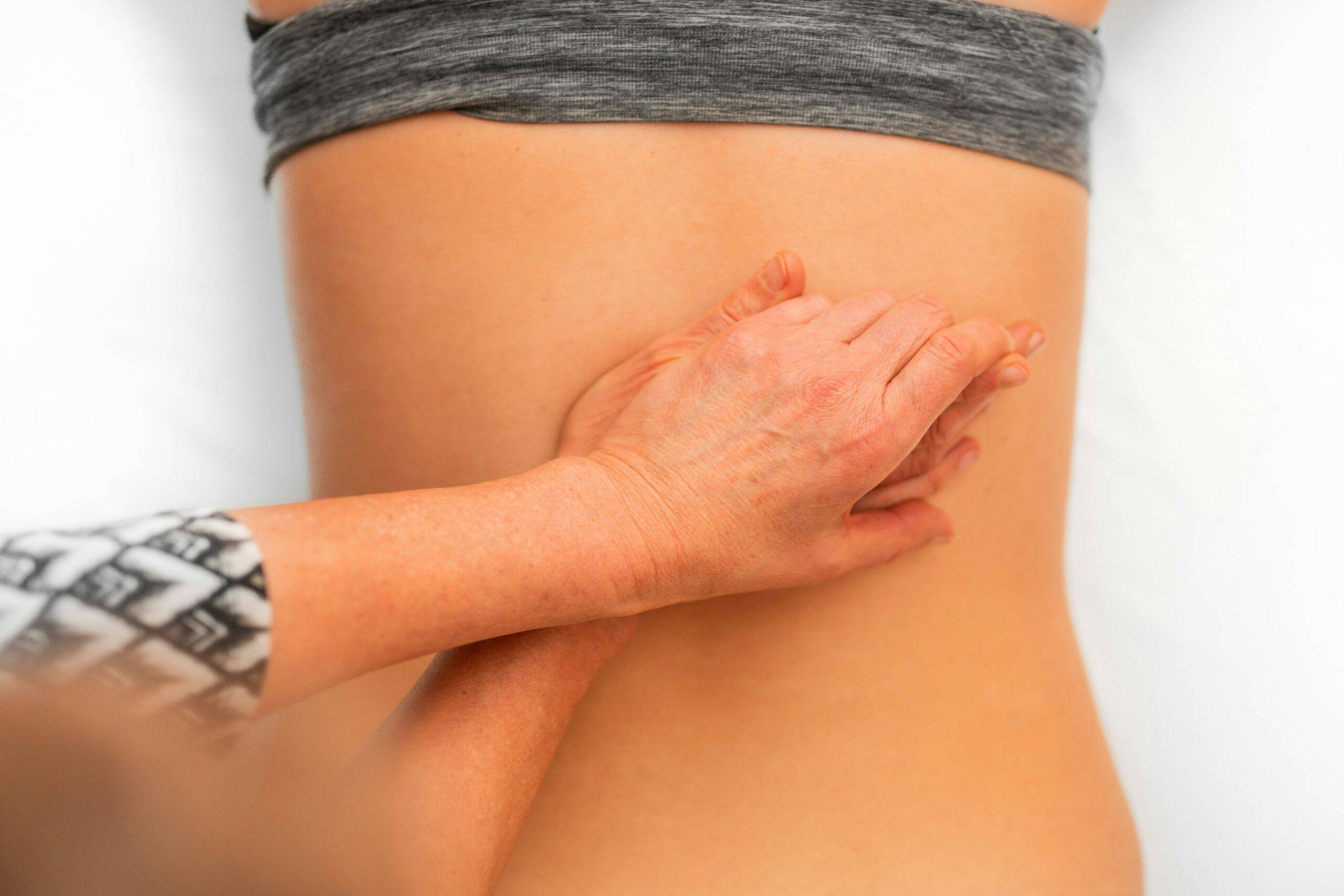Pelvic pain and lower back pain are common complaints that often coexist, creating a complex clinical picture. Understanding the intricate relationship between these two types of pain is crucial for effective diagnosis and treatment. As experts in musculoskeletal health care, Direct Orthopedic Therapy is dedicated to providing comprehensive care that addresses both pelvic and lower back pain, helping patients regain function and improve their quality of life.
Anatomy of the Pelvic and Lumbar Regions
To comprehend the link between pelvic and lower back pain, it’s essential to first understand the anatomy of these regions.
The Pelvic Region
The pelvis is a bony structure located at the base of the spine, comprising the sacrum, coccyx, and a pair of hip bones (ilium, ischium, and pubis). It houses and protects vital organs such as the bladder, reproductive organs, and the rectum. The pelvic floor muscles span the bottom of the pelvis, supporting these organs and contributing to functions like urination, defecation, and sexual activity.
The Lumbar Spine
The lumbar spine consists of five vertebrae (L1-L5) situated between the thoracic spine and the sacrum. These vertebrae are larger and stronger than those in other spinal regions, reflecting their role in bearing much of the body’s weight and facilitating movements such as bending and twisting. Intervertebral discs between the vertebrae act as shock absorbers, while surrounding muscles and ligaments provide stability and support.
Shared Structures and Their Implications
The pelvis and lumbar spine are interconnected through various structures:
- Muscles: Several muscles, including the psoas major, iliacus, and the pelvic floor muscles, span both regions, influencing posture and movement.
- Nerves: The lumbar and sacral plexuses, networks of nerves originating from the lower spine, innervate the pelvic region and lower limbs.
- Fascia: Connective tissue layers envelop muscles and organs, linking the pelvis and lumbar spine.
Due to these shared structures, dysfunction or pain in one area can readily affect the other, leading to concurrent pelvic and lower back pain.
Common Causes of Concurrent Pelvic and Lower Back Pain
Several conditions can result in simultaneous pelvic and lower back pain:
1. Pelvic Floor Dysfunction
Pelvic floor dysfunction occurs when the pelvic floor muscles are unable to contract or relax properly. This dysfunction can lead to symptoms such as pelvic pain or injury, urinary or fecal incontinence, and sexual discomfort. The pelvic floor muscles play a crucial role in supporting the pelvic organs and maintaining continence. When these muscles are weak or overly tight, they can contribute to both pelvic and lower back pain and injury. Physical therapy interventions, including pelvic floor training, manual therapy, biofeedback, movement patterning, and behavioral modifications, are effective in managing pelvic floor dysfunction.
2. Sacroiliac Joint Dysfunction
The sacroiliac (SI) joints connect the sacrum to the ilium of the pelvis. Dysfunction in these joints, whether due to inflammation, hypermobility, or hypomobility, can cause pain in the lower back and pelvis. SI joint dysfunction is often characterized by pain that worsens with prolonged standing or sitting and may radiate to the buttocks or thighs.
3. Endometriosis
Endometriosis is a condition where tissue similar to the uterine lining grows outside the uterus, often involving the pelvic organs and peritoneum. This ectopic tissue can cause chronic pelvic pain, which may radiate to the lower back. Symptoms often worsen during menstruation.
4. Pelvic Girdle Pain During Pregnancy
Pregnancy induces various physiological changes, including ligamentous laxity and altered biomechanics, which can lead to pelvic girdle pain. This pain often extends to the lower back and is exacerbated by activities such as walking, standing, or changing positions.
5. Lumbar Disc Herniation
A herniated disc in the lumbar spine occurs when the inner nucleus pulposus protrudes through the outer annulus fibrosus, potentially compressing nearby nerves. This can result in lower back pain radiating to the pelvic region and legs, a condition often referred to as sciatica.
6. Hip Pathologies
Conditions such as hip osteoarthritis or labral tears can present with pain in the groin, pelvis, and lower back due to the close proximity and shared musculature of these regions.
The Role of Physical Therapy in Managing Pelvic and Lower Back Pain
Physical therapy plays a pivotal role in the assessment and treatment of concurrent pelvic and lower back pain. A comprehensive evaluation by a skilled physical therapist can identify contributing factors and guide the development of an individualized treatment plan.
Assessment
A thorough assessment includes:
- Medical History: Gathering information about the onset, duration, and nature of symptoms, as well as any relevant medical conditions or surgeries.
- Postural Analysis: Evaluating alignment and identifying any deviations that may contribute to pain.
- Movement Assessment: Observing functional movements to identify compensatory patterns or limitations.
- Palpation: Assessing tissue texture, tone, and tenderness in the lumbar and pelvic regions.
- Special Tests: Performing specific tests to assess the integrity and function of the lumbar spine, sacroiliac joints, and pelvic floor muscles.
Treatment Modalities
Based on the assessment findings, a combination of the following interventions may be employed:
1. Therapeutic Exercise
Therapeutic exercises are fundamental in managing concurrent pelvic and lower back pain. These exercises aim to enhance flexibility, strength, and endurance of the muscles supporting the spine and pelvis, thereby improving stability and reducing discomfort.
Key Components:
- Flexibility Training: Stretching exercises targeting muscles such as the hip flexors, hamstrings, and lumbar extensors can alleviate tension contributing to pain.
- Strengthening Exercises: Focusing on core muscles, including the transverse abdomen, multifidus, and pelvic floor muscles, helps provide essential support to the lumbar spine and pelvis.
- Aerobic Conditioning: Incorporating low-impact aerobic activities like walking or swimming can improve cardiovascular health and promote overall muscle endurance, supporting spinal health.
2. Manual Therapy
Manual therapy encompasses hands-on techniques aimed at modulating pain, enhancing mobility, and improving tissue extensibility. These techniques include joint mobilizations, manipulations, and soft tissue mobilization. For patients with pelvic and lower back pain, manual therapy can address restrictions in the lumbar spine, sacroiliac joints, and hip joints, as well as alleviate myofascial trigger points in associated musculature. Evidence supports the use of manual therapy in reducing pain and improving function in individuals with low back pain.
3. Pelvic Floor Muscle Training
Given the integral role of the pelvic floor muscles in supporting pelvic organs and contributing to core stability, targeted training of these muscles is essential. Pelvic floor muscle training involves exercises designed to strengthen or relax these muscles, depending on whether they are weak or overactive. Techniques such as Kegel exercises can enhance muscle strength, while relaxation techniques and manual therapy can address muscle tightness. Biofeedback may also be utilized to improve the patient’s awareness and control of pelvic floor muscle function.
4. Motor Control Exercises
Motor control exercises focus on retraining the coordination and control of muscles that support and stabilize the spine and pelvis. These exercises aim to restore optimal movement patterns and improve the function of the deep stabilizing muscles, such as the transverse abdomen and multifidus. Research indicates that motor control exercises can be effective in reducing pain and disability in individuals with chronic low back pain.
5. Patient Education
Educating patients about their condition is a cornerstone of physical therapy. Understanding the relationship between pelvic and lower back pain empowers patients to actively participate in their recovery. Education may cover topics such as posture, body mechanics, activity modification, and the importance of adherence to exercise programs. Providing reassurance and setting realistic expectations can also alleviate fear and anxiety associated with pain, contributing to improved outcomes.
6. Pain Neuroscience Education
Pain neuroscience education involves teaching patients about the neurophysiological processes underlying pain perception. By understanding that pain is a complex experience influenced by various factors, patients can reframe their pain experience, which may reduce pain intensity and improve engagement in therapeutic activities.
7. Lifestyle and Ergonomic Modifications
Addressing lifestyle factors and ergonomics is crucial in managing and preventing pelvic and lower back pain. Physical therapists may provide guidance on:
- Workstation Ergonomics: Adjusting chair height, desk setup, and computer positioning to promote optimal posture.
- Activity Modification: Altering daily activities to minimize strain on the back and pelvis, such as using proper lifting techniques and avoiding prolonged static postures.
- Sleep Hygiene: Recommending sleep positions and mattress types that support spinal alignment.
- Weight Management: Encouraging a healthy weight to reduce excessive load on the spine and pelvic structures.
8. Multidisciplinary Collaboration
In complex cases, collaboration with other health care professionals, such as physicians, pain management specialists, or pelvic health specialists, may be beneficial. A multidisciplinary approach ensures comprehensive care addressing all aspects of the patient’s condition.
By integrating these treatment modalities, physical therapists can develop individualized, evidence-based intervention plans that address the multifaceted nature of concurrent pelvic and lower back pain, ultimately enhancing patient outcomes and quality of life.
Direct Orthopedic Therapy: How We Can Help
At Direct Orthopedic Therapy, we specialize in the comprehensive assessment and treatment of musculoskeletal conditions, including the complex interplay between pelvic and lower back pain. Our team of experienced physical therapists employs a patient-centered approach, utilizing the latest evidence-based practices to develop individualized treatment plans.
Our Approach Includes:
- Comprehensive Evaluation: We conduct thorough assessments to identify the root causes of your pain, considering factors such as posture, movement patterns, muscle imbalances, and lifestyle influences.
- Personalized Treatment Plans: Based on our evaluation, we design tailored intervention strategies that may include therapeutic exercises, manual therapy, pelvic floor muscle training, and patient education.
- Patient Empowerment: We believe in empowering our patients through education, providing you with the knowledge and tools necessary to manage your condition effectively and prevent future occurrences.
- Collaborative Care: When appropriate, we collaborate with other healthcare providers to ensure a holistic approach to your treatment, addressing all aspects of your health and well-being.
If you’re experiencing pelvic and lower back pain, our dedicated team at Direct Orthopedic Therapy is here to help you navigate your path to recovery and regain your range of motion. Contact us today to schedule a consultation and take the first step toward a pain-free life.



